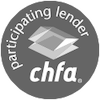The Secret to Paying Off Debt Forever
(and the 5 best ways to make it happen)

Paying off debt is similar to dieting.
I can relate to both. I am about 60 pounds lighter than I was at my heaviest. And I’ve paid off over $1,000,000 in debt.
It wasn’t easy. I had my struggles. I had bad days. I had thoughts of giving up.

Here’s the secret to success at both dieting and defeating debt…once and for all. Are you ready? It’s going to seem so obvious but it’s the secret that helped me and I think it will help you too. The secret is to not worry about being perfect.
Life happens. Things get in the way. Heck, you get in your own way. But that’s ok. Knowing this and accepting this is what you need to be successful.
It happens every time. The week you decide to go “all-in” on your diet you get invited to a family get-together. Maybe it’s a BBQ. Maybe a birthday. Whatever it is there are always treats that can get you “off track”. It’s ok.
The first thing you see when you walk in is the chocolate cake. It’s sitting there staring at you. Whispering your name. The rich and moist chocolate cake with the decadent chocolate ganache. You can just imagine it melting in your mouth. Is your mouth watering yet?
(Not a chocolate fan? Just imagine your favorite dessert instead.
Instead of avoiding it, have a slice. Don’t be perfect. Indulge sometimes. Live life.
Same goes for paying off debt. You’ll begin your journey of paying off debt and, just like dieting, you’ll have something pop up. Maybe it is new tires. Doctor bill. Or an invitation to go out with family or friends.
Handle it. Solve it. Then get back to it.
Of course, you can’t indulge your every desire when you’re on a diet. And you can’t splurge whenever you choose when you’re paying off debt. But every once in a while it is important to go “off track”. Because, it is what keeps you going. Failing at being perfect means you are more likely to give up…because you already failed. But if you work some of these “off track” moments into the plan, you didn’t fail. You just followed the expected plan.
With this in mind there are five ways to defeat debt once and for all. Let’s dive in…

1. Debt Snowball
My buddy Dave made this debt payoff strategy popular.
Maybe you know Dave? He has a radio show. And a TV show. He even wrote a book. Yeah, that Dave. Dave Ramsey.
Dave likes this strategy because it keep you motivated. The more motivated you are the more likely you are to stick to it. And defeat debt, once and for all!
Paying off a small balance and feeling accomplished is why it works so well and that’s how the debt snowball strategy works.
- First, you pay off the debt with the lowest balance using any excess money you have available each month.
- Then, you take all the money you were putting towards paying off that debt and apply it to the next lowest balance.
- Each time you feel good. You’re making progress. You’re paying off debt.
- Repeat this process until all debts are paid off.
Simple, yet effective.
2. Debt Avalanche
Why are all the debt strategies so cold? Snow…now avalanche?
I guess they just make good metaphors. Are are they similes? I wasn’t all that great with these things. And now look at me now…writing blog posts! Ha!
Anyway, I got sidetracked there.
Imagine a small snowball rolling down the hill. As it rolls it grows larger picking up more snow along the way. Eventually it is so large it is impossible to slow down. That’s why they call is “debt snowball”.
But now, consider the force of an avalanche. It starts out of nowhere. It is impossible to stop, even from the start. It is powerful.
The reason this strategy is called the debt avalanche is because it is a very powerful debt payoff strategy.
Here’s how it works (I think you’ll see the similarities to the snowball):
- First, pay off the debt with the highest interest rate.
- Once paid use the money to pay off the next highest rate debt.
- Repeat until all debts are paid.
This strategy results in a lower cost, but you have to be patient.
When I first started paying off my $1,000,000 in debt I had a lot of little debts. Student loans, auto loans, whatever. But one of the biggest debts also had a pretty high rate. I had a balance over $40,000 with a rate over 10%. Oh, and it was an interest only debt. I wasn’t even paying it off through normal payments! I needed to get that things paid off. But with just a small excess available to pay down the balance, it was going to take a while.
That’s the good and the bad with this strategy. Sure, you are paying off the debt you should be paying off because it will result in less interest paid, overall. But the time it could take to pay off that first debt could be…wait for it…years!
Can you be that disciplined for that long? Or would you rather see some progress? Only you can decide. Whatever you decide is the right decision…for you. Don’t worry what others have done or what is “optimal”. Follow the plan that works for you.
3. Cash Flow
I made this up. Wait, that sounds wrong. I invented this. No, that’s not right either. Whatever, I came up with this strategy to help my mortgage clients.
As you can imagine, many clients who want to buy a home have some work to do before they buy. Sometimes they need to work on their credit. Other times they need to pay off debt. Or save for down payment. But all of these things are related.
That’s why I created this method of paying off debt. It gives you freedom and flexibility.
Freedom and flexibility is important when buying a home. You need to have options. To negotiate and secure the home you want. Freeing up monthly cash flow is a great way of creating freedom and flexibility. That’s what this strategy does.
It may not be as simple as the snowball or avalanche strategy, but I think it is better for most people. Here’s how it works:
- First, find the debt with the highest payment-to-balance ratio.
- For example, let’s say you have a $1,000 balance with a $100 payment and a $2,500 balance with a $150 payment.
- Divide the balance by the payment. $100/$1000 = .10 and $150/$2500 = .06.
- Whichever has the highest number is the debt you pay off first.
- Repeat until all debts are paid off (or you need to stop)
Doing this will require the least amount of money to give you the biggest impact in your monthly cash flow.
I like this for my mortgage clients because sometimes we need to lower monthly payments. Other times we need to put money into saving for a down payment. Following this strategy gives us the ability to start and stop whenever we want while giving us the largest benefit to mortgage qualifying or freeing up cash to save more money.
But it works in life too. One of the biggest things that stops people from succeeding in paying off debt is those unexpected expenses. Doctor bills. Auto repairs. If you have the freedom and flexibility to pay for those things in cash (from the excess cash flow) rather than on credit, then you can stay on track and keep moving forward.
4. Sell & Buy a Home
What?! How is selling my home and buying another going to help me pay off debt?
I am not suggesting that if you don’t want to move that you should move just to pay off debt. But many people in debt would move if they knew it was possible.
Wouldn’t it be great if you could get a newer, nicer, more spacious home and pay off debt at the same time.
All while keeping your monthly payments somewhat the same (or even lower)?
As your home value goes up and you pay down your mortgage balance you build equity. But it’s frozen! (now, is this a simile?)
Selling your home gives you access to that equity.
You might be thinking that when you sell your home and get the equity that you must put that equity into your next home. Maybe you are concerned about being taxed. Maybe you thought it was a rule of some kind.
Well, there’s no rule saying you have to take your equity from the home you sell and put it towards the home you buy.
There is also an IRS exemption on paying taxes on your equity (up to $500,000) when selling the home you use as your primary home:
If you have a capital gain from the sale of your main home, you may qualify to exclude up to $250,000 of that gain from your income, or up to $500,000 of that gain if you file a joint return with your spouse.
Now that we know that we can use that money however we choose what should we do with it?
This is where I suggest you zoom out. It is easy to get tunnel vision and think all the money tied to your home should remain tied to the next home. To lower the monthly payments. To avoid mortgage insurance. To give you equity in the next home.
But, zooming out gives you perspective. What matters most? My guess is two things:
- Now
- Later
You want to be comfortable now. You want to enjoy life. You want to provide for your family.
You also want to be comfortable later. You want to be free from having to work. You want to not worry about money.
Can you work towards improving both of these at the same time? I think so.
Use your equity to pay off debt. Sometimes the debt you pay off could be at a lower rate than what you could get on a mortgage. But stick with me for a moment and I’ll explain why.
Remember what I said about the Cash Flow debt payoff strategy? It gives you freedom!
The same is true here. Paying off debt to free up cash flow gives you freedom. You can use this excess cash flow to improve your future. Save for your kids’ college. Contribute to retirement savings. Invest in real estate or stocks.
Without the cash flow you wouldn’t have these options. Sure, the mortgage may have a slightly higher payment than you’d like, but without any other debt (or very minimal debt) you have options you didn’t have before.
Oh yeah, you’ll also have a nice, new, spacious home that is more suitable for your family than the one you own now.
5. Refinance
The only way to tap into your frozen equity is to sell or get a loan.
Refinancing is one way to get access to the equity to use it in a way that benefits you more than just sitting there.
If you have enough equity you can cash out the equity and use it to pay off debt. Maybe make some home improvements that were put off.
I’ve talked about how important freedom is. I’m even an author on the topic. Refinancing may be able to give you more freedom. If you are not looking to move, but want to take advantage of all the opportunities you would get from accessing your equity, then a cash-out refinance may be a great option.

Refinancing can be a very costly solution for those that don’t carefully consider the short-term and long-term benefits…and drawbacks. You should clearly know the costs. The savings. The use of your freed up equity and how it will benefit you greater than leaving it frozen and in place.
But for others it can be the life-saving solution. To finally get ahead. To not have to stress every single month about money.
Now What?
What are you going to do?
You have two choices:
- Something
- Nothing
You don’t have to do anything. In some cases, it may be best to do nothing.
But, if you got this far my guess is you need (or want) to do something about your debt. You want to get rid of it. Defeat it!
Take control and create freedom.
How can I help? I got out of debt. A lot of debt. Over $1,000,000 in debt. I had my challenges. I used all these strategies along the way.
I help people get out of debt every day.
Full disclaimer: I also help a lot of people get into debt. Mortgage debt. To help people buy homes. Because I believe in homeownership. It is one of the best ways to create wealth and has been proven to be effective. Homeowners are about 40X more wealthy than renters. There’s a reason for that.
Are you using the wealth you are creating, in the form of equity, to benefit you? If not, we should talk.



















